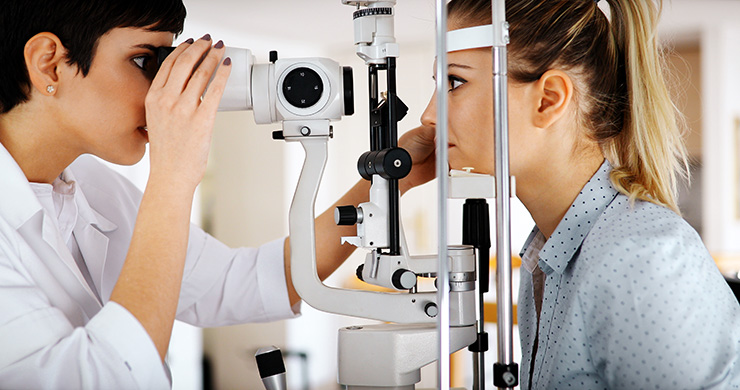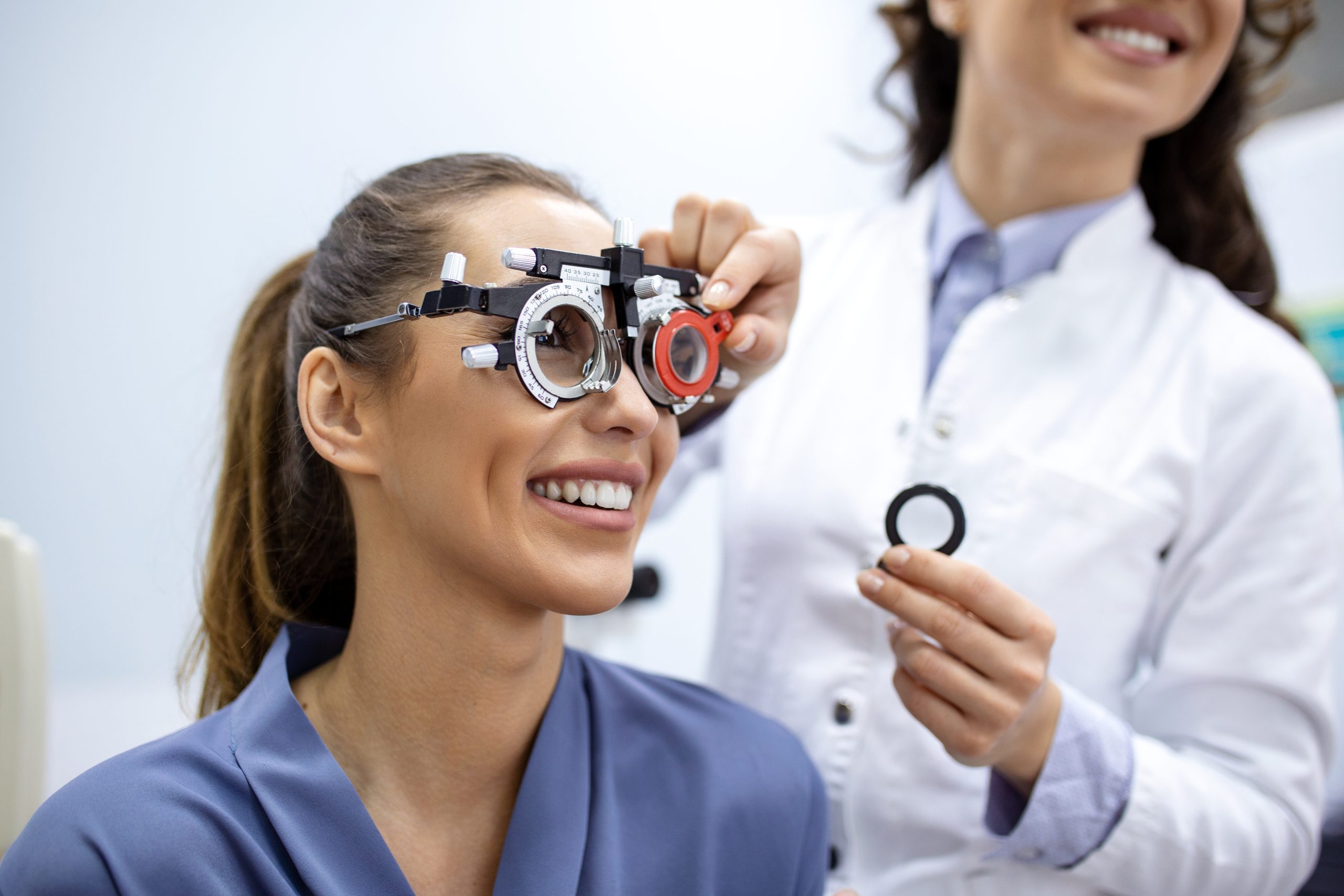Exploring the most up to date Technical Innovations in Optometry and What They Mean for Eye Doctors
In the ever-evolving field of optometry, current technological improvements are reshaping just how professionals approach eye care. From the precision of Optical Comprehensibility Tomography to the nuanced insights supplied by AI-driven analysis tools, these advancements are setting brand-new requirements in individual analysis and therapy. Teleoptometry is positioned to redefine access, making certain that experience goes beyond geographical constraints. As these improvements penetrate the technique, eye doctors are confronted with the difficulty of embracing these devices to boost patient outcomes. Yet, the inquiry continues to be: how will these technical shifts redefine the roles and responsibilities within the occupation?
Innovations in Diagnostic Devices
Progressing the area of optometry, advancements in diagnostic tools have reinvented the means eye treatment professionals examine and diagnose eye problems and visual problems. The past decade has experienced considerable technological developments, allowing even more precise and extensive examinations. Optical Comprehensibility Tomography (OCT), for example, offers high-resolution cross-sectional pictures of the retina, permitting the very early detection of diseases such as glaucoma and age-related macular deterioration. This non-invasive imaging method has actually become important in modern optometric technique.
An additional secret development is the introduction of sophisticated corneal topography systems, which map the surface curvature of the cornea with precision. These devices are especially useful for fitting contact lenses and identifying corneal problems. Furthermore, electronic retinal imaging has transformed traditional ophthalmoscopy, offering detailed, scenic views of the retina that promote complete aesthetic examinations.
The growth of wavefront aberrometry has actually additionally been vital, enabling the evaluation of refractive errors with unparalleled accuracy (Eye Doctor Optometrist). This innovation aids in customizing restorative lenses and improving surgical results for refractive surgeries. Jointly, these diagnostic developments empower eye doctors to provide superior individual care, making sure early intervention and tailored therapy methods, inevitably improving aesthetic health and wellness results
AI in Individual Monitoring
Building on the structure of advanced diagnostic devices, the consolidation of artificial intelligence (AI) in person administration represents a transformative jump for optometry. AI systems are progressively employed to improve performance, accuracy, and personalization in client treatment.
Additionally, AI-driven systems facilitate streamlined individual communications and administrative procedures. Automated organizing, online assessments, and customized follow-up plans not just enhance individual fulfillment however also optimize time management for practitioners. These systems can triage individuals based upon the urgency of their conditions, making certain that those in important demand obtain prompt attention.
Moreover, AI improves decision-making by offering eye doctors with evidence-based suggestions and treatment pathways. By incorporating data from electronic wellness documents, AI devices provide understandings that notify medical decisions, minimizing the danger of errors and boosting individual outcomes. As AI remains to progress, its duty in patient administration will likely broaden, improving the landscape of optometric treatment.
Developments in Retinal Imaging
In the realm of optometry, retinal imaging has actually witnessed amazing technological innovations that are boosting analysis abilities and person treatment. Innovations such as Optical Comprehensibility Tomography (OCT) and fundus digital photography have changed how optometrists picture and assess the retina. OCT, in certain, gives high-resolution, cross-sectional photos of the retina, permitting the comprehensive exam of its layers. This capability is very useful for very early detection and monitoring of problems like glaucoma, diabetic retinopathy, and age-related macular degeneration.
Boosted imaging techniques like OCT angiography are see this page further refining analysis accuracy. Opticore Optometry. Such advancements promote the recognition of minute retinal modifications that might indicate disease progression.
Additionally, improvements in expert system are enhancing retinal imaging by making it possible for computerized analysis of large datasets. These systems help eye doctors in identifying patterns a measure of pathology, thereby improving analysis accuracy and performance. Collectively, these advancements are transforming retinal imaging right into a keystone of modern eye care, improving outcomes and broadening restorative possibilities.
Teleoptometry's Expanding Function
Teleoptometry is significantly ending up being a crucial component of eye treatment, driven by improvements in digital interaction and analysis tools. This is specifically useful in rural and underserved areas where access to specialized eye care is typically limited.
The assimilation of expert system (AI) more enhances teleoptometry, making it possible for the analysis of aesthetic data and aiding in the discovery of ocular conditions such as glaucoma and diabetic person retinopathy. AI-powered algorithms can swiftly translate complex imaging information, providing eye doctors with valuable understandings that bolster scientific decision-making.
Moreover, teleoptometry supports connection of care with smooth integration with digital health records (EHRs), permitting optometrists to preserve thorough client backgrounds. When seeking advice from with various practitioners., this makes sure that people receive tailored and consistent care even.
In spite of these benefits, obstacles remain, including making sure information protection and managing individual expectations. Teleoptometry stands for a substantial stride in the direction of even more obtainable, reliable, and patient-centered eye treatment. As modern technology evolves, its role is poised to expand further.

Future Patterns in Eye Care
A myriad of innovative trends is set to improve the future of eye treatment, driven by technical improvements and the progressing requirements of individuals. One considerable trend is the integration of artificial knowledge (AI) in diagnostics, which assures to boost the precision and efficiency of eye examinations. AI formulas can examine huge amounts of information from retinal photos, potentially discovering conditions like diabetic person retinopathy and glaucoma earlier than typical techniques.
Furthermore, personalized medication is getting traction in optometry, with hereditary testing informing tailored treatment plans. This strategy aims to optimize individual results by customizing treatments to specific genetic accounts. Wearable modern technology, such as clever call lenses, is also coming up, using real-time monitoring of intraocular stress or glucose degrees, thus giving constant understandings into eye and systemic wellness.
The adoption of increased reality (AR) and digital reality (VIRTUAL REALITY) in training and individual education is an additional emerging pattern. These technologies use immersive experiences that can enhance understanding and skills both for eye doctors and clients. As these from this source patterns advance, optometrists have to stay abreast of technological innovations to offer sophisticated treatment, ensuring enhanced individual outcomes and fulfillment in the vibrant landscape of eye care.
Final Thought

Collectively, these diagnostic innovations empower optometrists to deliver superior person treatment, guaranteeing early treatment and tailored therapy methods, eventually boosting aesthetic health end results.

As these innovations proceed to evolve, optometrists need to adjust and incorporate them into technique, ultimately optimizing process performance and elevating the requirement of eye treatment supplied to people.